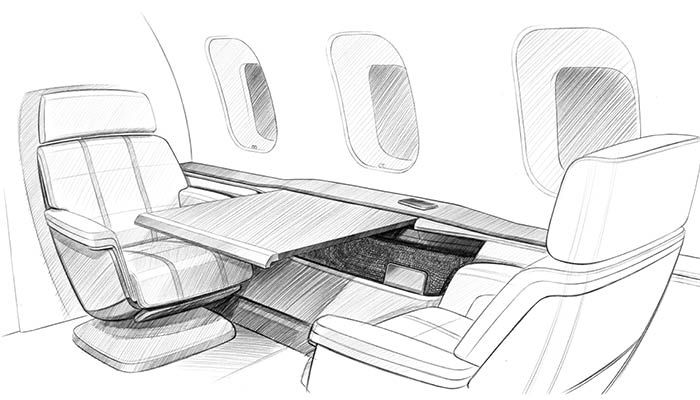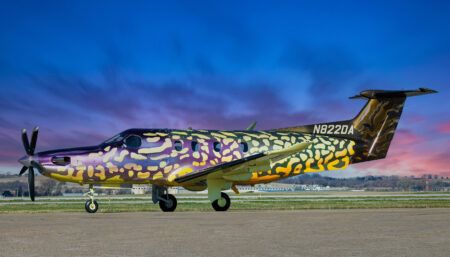Gary Doy, director of Doy Design, discusses AI, AR and emerging cabin trends.
How do you feel about the potential of AI for design?
We are seeing AI used in the design process to support the generation of multiple ideas and provide generative tools to refine the workflow. These AI tools can provide quick visual responses to the designer’s inputs as part of the creative process. Although the visuals from AI are very impressive, we find the tools tend to generate familiar solutions and work on a more superficial level when it comes to resolving design issues. Asking the right question is an important part of the creative process.
The ability to produce quick polished visuals at an early stage in the design process can be a challenge as it sets up an expectation from customers to see early ‘finished’ designs that can lack design thinking and originality. A talented team of designers with experience in their field makes a myriad decisions during the creative process and like method actors really get under the skin of design problems. The challenge with AI is to complement our non-linear approach to design and help drive creative solutions that draw on unpredictable sources for inspiration.
Are there uses for AR?
We currently use AR to superimpose our design updates within a real-world environment both as a sales tool and as part of the design process. This is particularly useful when combining real-world architectural models with virtual design concepts, allowing the user to experience both the design and physical space at the same time. The step change we have seen over the past few years is the freedom to physically move around the cabin in real-time and start to immerse yourself within the virtual world. We are experimenting with tools to build sketch models in the virtual world over full-scale products in the real world. This is likely to develop into an additional toolkit for designers to develop and communicate ideas.
What other technologies could benefit design?
As we all take more interest in the lifecycle of our products to minimise their impact on our environment, and with more intelligent products collecting data, we need to find efficient ways to analyse this data and provide clear inputs to the design team. AI can play a significant role in identifying how the customer uses the product in service and which materials could be used to maximise the customer benefits and develop more sustainable products for the future.
What emerging trends will impact cabin design in 2024?
We’re likely to see new aesthetic finishes developed with generative design tools used in combination with smart materials. Some of these materials will have embedded technology and additional functionality. Further development in sustainable materials will certainly be a key design direction.
We will see a trend towards highly detailed and complex forms in some areas of the cabin with micro mechanisms leveraging the opportunities and freedom given by additive manufacturing. We are using this in high-end luxury cars today to create showcase ‘halo’ products.
This interview was conducted by Izzy Kington and first published in the March/April 2024 edition of Business Jet Interiors International as part of the Design Forum feature.






